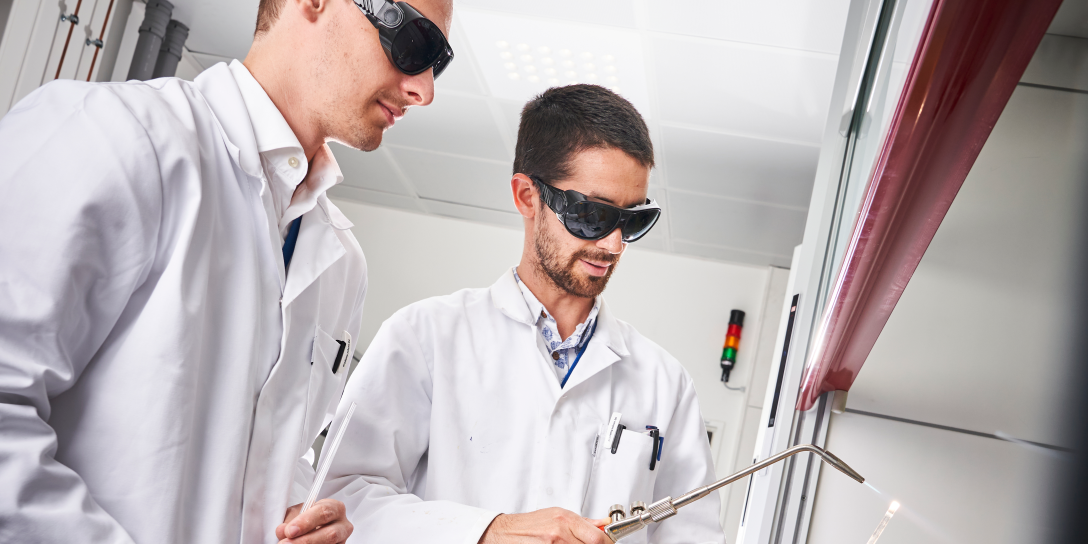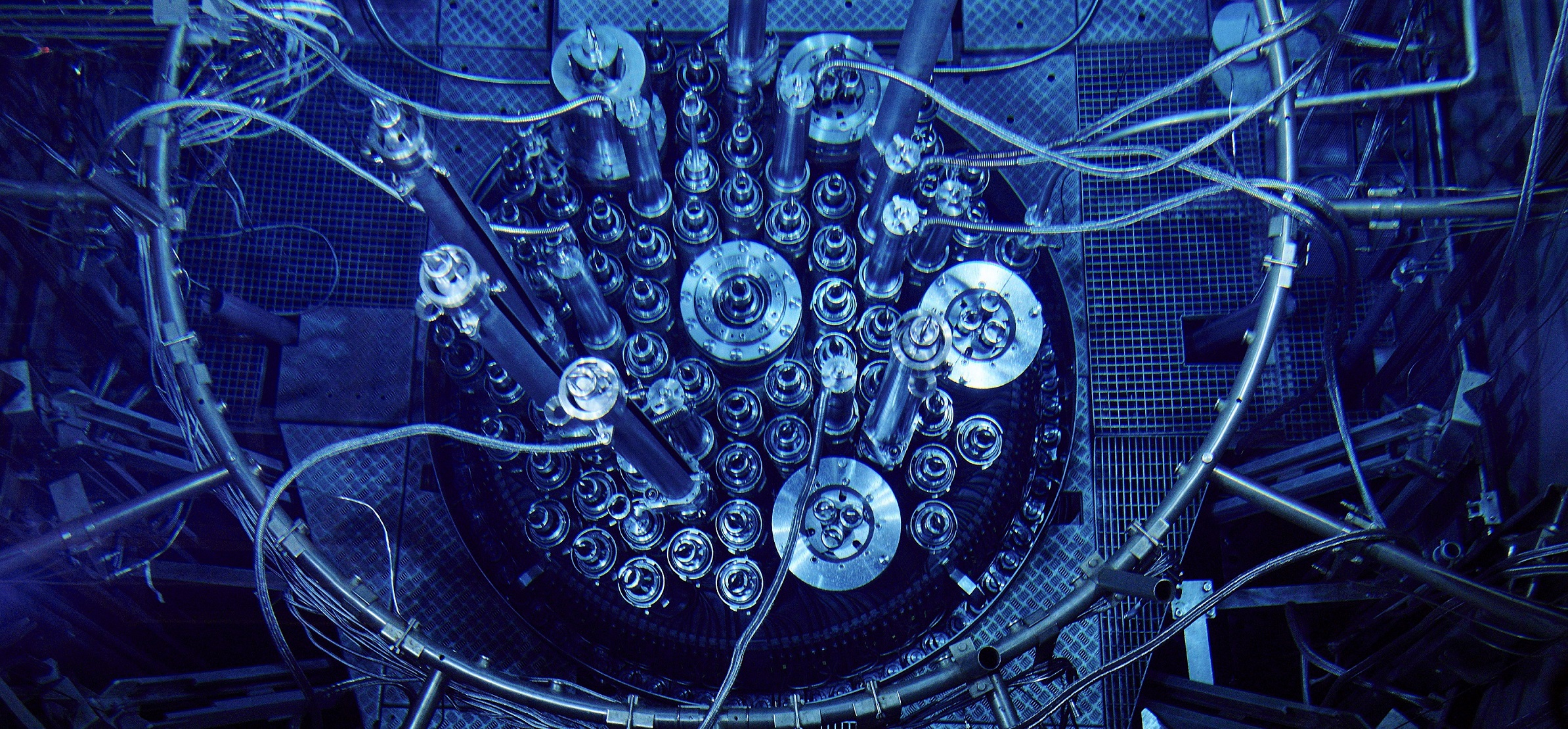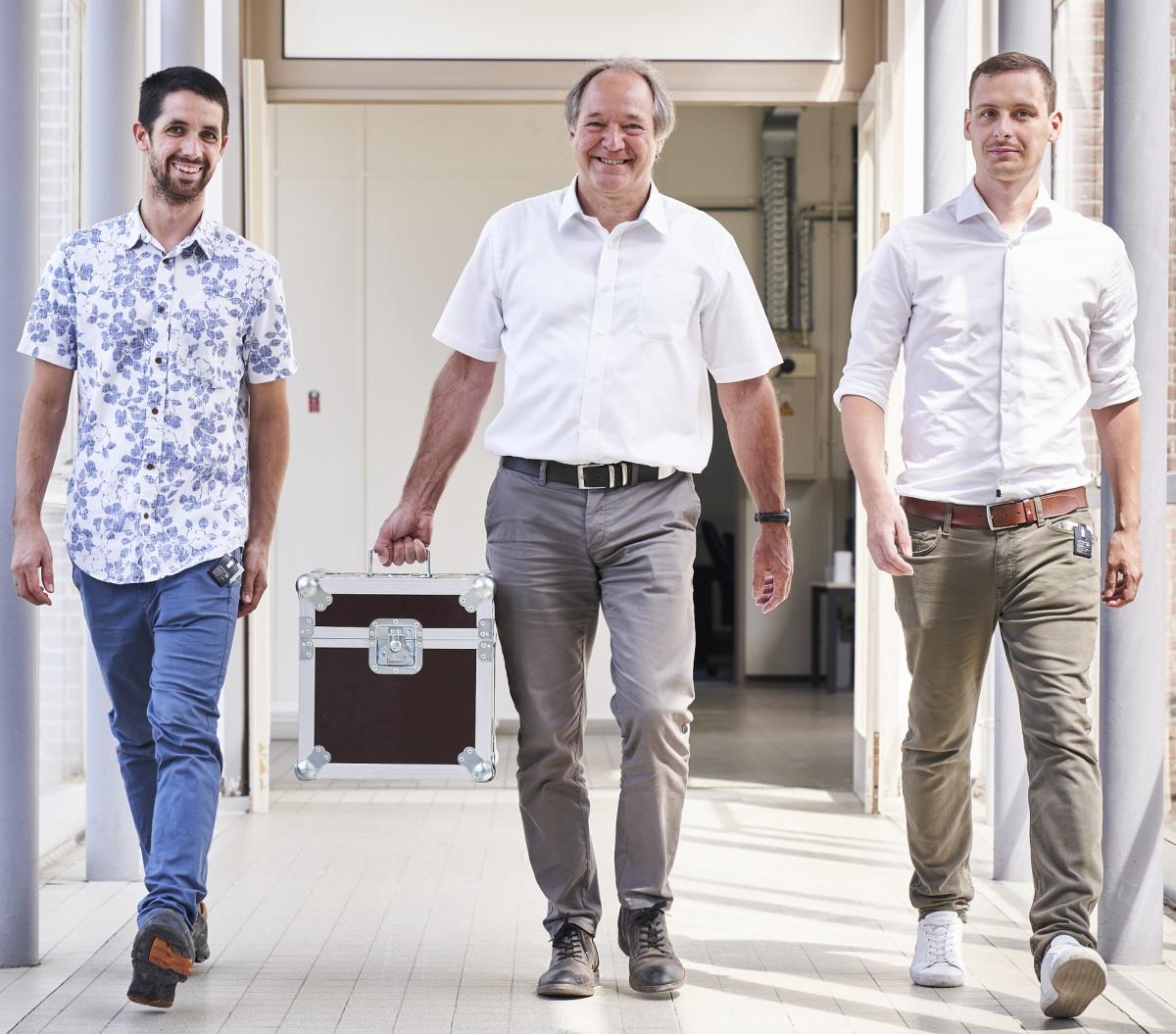2021/2026
First terbium-161 production
Terbium-161: an emerging radioisotope in the fight against cancer
SCK CEN has taken the next step in the production chain for the first time

A higher local dose allows for an increased therapeutic effect. Terbium-161 appears to be one of the radioisotopes of the future, but is this really the case? In order to answer this question, SCK CEN began producing terbium-161 on a small scale. “We performed all the stages of the production chain for a radiopharmaceutical product: from the preparation of irradiation targets to the radioactive labelling of biomolecules. This is a major first for SCK CEN!” say the radiochemists involved.
“It has a half-life of just under seven days and decays by emitting a beta particle with a maximum energy of approximately 0.5 MeV. Suitable low energy gamma rays are also emitted for imaging. While this could be a description of the therapeutic radioisotope lutetium-177, the isotope we are producing also emits low-energy conversion and Auger electrons.”
The radioisotope described here is terbium-161. “A new emerging talent among therapeutic radioisotopes,” says Andrew Burgoyne, radiochemist at SCK CEN. “Therapeutic radioisotopes are a vital link for targeted cancer treatments. In this type of treatment, a carrier molecule transfers a radioisotope very precisely to the cancer cells. Once the carrier molecule has attached or embedded itself in the cell, the radioisotope can irradiate the cancer cell. The cancer cells are damaged, causing them to die and the tumour itself eventually shrinks.”
Treating cancer cells locally
Targeted cancer treatments have existed for a while. What makes terbium-161 so special? “Auger electrons,” replies fellow radiochemist Michiel Van de Voorde. “When terbium-161 decays, the isotope emits, on average, two low-energy Auger electrons per beta particle. Once ejected, the Auger electrons – like alpha particles – do not travel far. This means that a higher dose can accumulate per injection and the cancer cell is treated very locally. In addition, damage to healthy tissues is kept to a minimum. We are therefore hoping for an even greater therapeutic effect than with lutetium-177.” In order to prove this therapeutic effect, a great deal of pre-clinical research is still required. “However, the availability of terbium-161 is currently limited, which slows down research and development,” says Van de Voorde. We are working to increase the availability, as SCK CEN itself began small-scale production in 2019. “The more available terbium-161 becomes, the more studies can be conducted and the more rapidly the radioisotope will reach the patient,” explains Bernard Ponsard, reactor physicist and radioisotopes stakeholder manager.
From production to pre-clinical studies
In the past, SCK CEN was only concerned with the first phase of medical radioisotope production: target irradiation. “We are now taking another step in the production chain. This is a major first for the SCK CEN,” says Burgoyne. “After irradiation in the BR2 research reactor, the capsules are transported to a radiochemical laboratory on another part of the site in Mol. In this laboratory, we isolate pure terbium-161 by separating the isotope from gadolinium and dysprosium using a chemical process. We implemented and optimised this separation technique in-house.”

In future years, we will extend the process to include other promising radioisotopes.
Moving up a gear
Irradiations at the BR2 research reactor began last year. “In each cycle, we reserved irradiation positions for the production of research quantities of terbium-161. In the first cycle, we irradiated two capsules for two days. Afterwards, we systematically increased our capacities: two capsules became four, two days of irradiation turned into ten,” explains Ponsard. In future years, SCK CEN wishes to have the process GMP (Good Manufacturing Practice) certified, set up high-end production (as part of the NURA project, see box) and extend the process to include other promising radioisotopes. “Lutetium-177, tungsten-188 / rhenium- 188 and samarium-153 are the first in line,” explains Van de Voorde. For this purpose, the radiochemists will begin to use a new specialised radiochemical laboratory in 2020.

The NURA project: radiopharmaceuticals for the treatment of cancer
The NURA project is conducting pioneering research into radiopharmaceutical products for the treatment of various types of cancer. This research is taking place in partnership with clinical and industrial partners. The KU Leuven is one of the partners, with which SCK CEN scientists will conduct the first pre-clinical studies for terbium-161. They have already linked terbium-161 to a carrier molecule and are now evaluating the effect of this radiopharmaceutical product. Additionally, a number of international collaborations are already underway.
Availability of terbium-161 is limited. This slows down research and development.

The Terbium Brothers
Terbium-161 can also be used as part of a cocktail with similar terbium isotopes. Terbium-155 could reveal pathological processes in SPECT scans. Doctors could administer terbium-152 during PET scans (positron emission tomography) in order to detect malignant tumours and metastases. Or they could closely monitor the development of cancer treatment. “For the actual cancer therapy, we hope to be able to use terbium-149 in the future for alpha therapy on the one hand, and terbium-161 for beta therapy on the other. Terbium is therefore perfectly suited for diagnostic and therapeutic purposes. In short, it is a theranostic radioisotope par excellence,” adds Burgoyne. Why did SCK CEN opt to produce terbium-161 and not one of the other terbium isotopes? “We can produce terbium-161 in our BR2 research reactor. In order to produce terbium isotopes other than terbium-161, you do not need neutrons, but protons,” explains Bernard Ponsard. This installation is still under construction.
We have implemented and optimised an in-house separation technique in order to isolate pure terbium-161.